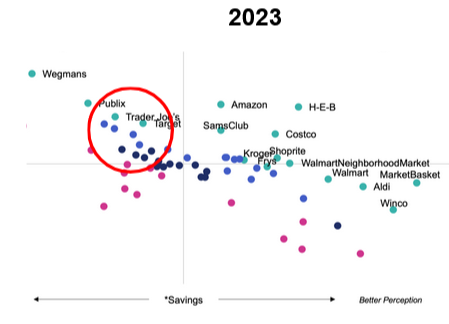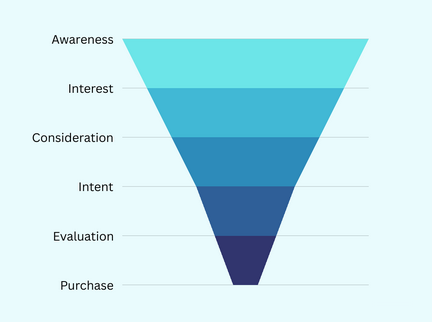
Below is part 2 of a multi-part series in what we will call multi-dimensional marketing, or otherwise stated, the process of looking at your overall approach to marketing through a variety of lenses. In doing so, we hope to showcase the overall concept of marketing, which is often undervalued as simply advertising.
It is Vetcelerator’s belief that marketing is more than branding and advertising; it is a philosophy to solve problems. It is creating, communicating, and capturing value. In this lens, managing phone calls is marketing as much as the name of your company.
The table of contents for what’s to come is as follows:
- Lessons in Naming
- How Do Brands Work?
- What is Performance Marketing?
- “Social Skills” and Cooperative Marketing
- Revisiting Competition and Purchase Consideration
Note from the Author
I wanted to start with two stories. Both of these stories are recent, and both articulate branding, marketing, and measuring consumer impact.
Story 1: At the time of writing, I’ve been in Salt Lake City for about three weeks. There is a massive brand in Salt Lake City. It’s called the Church of Latter-day Saints. I’m Catholic, and my wife is Jewish. No matter how much advertising, marketing, and goodwill this brand does to make me consider them, it will not impact my purchase consideration. Why?
Story 2: For as long as I can remember, my mom ate Cheez-Its. I vividly recall a box being opened and left on the countertop during most hours of the day for easy, cheesy snack access. The last time I went home, there were no Cheez-Its on the counter. They had been replaced by Veggie Straws, the gigantic Costco-sized bag version. Why?
We will revisit these stories at the end of this article.
What is a Brand?
A brand is more than a logo, a name, or a trademark. It is a promise—implicit or explicit—between a company and its customers. A brand sets expectations for attributes of quality, benefits, experience, and/or value.
From a practical standpoint, a brand is what people say about your business when you’re not in the room. It is the perception built through every interaction, whether digital, verbal, or in-person.
Bernard Arnault, CEO of Louis Vuitton Moët Hennessy, once said, “A brand must have a heritage; there are no shortcuts… It means the brand is built, if you wish, for eternity.” The strongest brands are built over time through consistent messaging, experiences, and value delivery.
What are the Challenges of Building and Maintaining a Brand?
Customers don’t just buy products; they buy solutions to problems. Each customer walks around with a problem they need to solve, or as Clayton Christiansen talks about, a job to be done. Brands act as signals that consumers use to quickly assess quality, reliability, self-expression, identity, and whether the brand will bring solutions to that consumer’s problems.
Each consumer comes with their own priorities, influenced by experience, knowledge, and expectations. For veterinary or pet care brands, consumers may be considering attributes like location, hours, ease of scheduling, look of your facility, bedside manner, and more.
The challenge for businesses is that:
- Customers are diverse and value different brand attributes.
- Perceptions are relative, not objective.
- Estimating the exact parameters of what customers want is difficult. Here is an attempt using Google Reviews.
- When asking customers what they want, they may say and do different things. This is known as stated vs. realized preferences.
- Competing offerings might not be traditional competitors (e.g. pay a cat boarding facility to watch your feline vs. buying a home security system to monitor the cat yourself)
- Customer perceptions of a brand change over time, sometimes rapidly.
- Getting a customer to care about your brand at all is difficult.
Consider the example of Trader Joe’s.
Dunnhumby is a great consultancy that studies trends in retail and has been conducting studies on grocers for nearly a decade. In 2018, Trader Joe’s was an outlier in grocery brand surveys, taking the top spot amongst all grocers for its blend of affordability and service. Five years later, consumer surveys showed that Trader Joe’s was perceived as expensive. Did their pricing change dramatically? No—but perceptions did. This shift highlights how customer sentiment is fluid and hard to estimate, shaped by competition, economic conditions, and marketing.


So, if a brand is a set of attributes valued across a diverse population, how do you, as the brand, set these perceived values of the qualities you want to compete in? (Also useful, read Lessons in Naming)
How Should Brands Think About the Customer’s Journey?
Brand marketing is one (tiny) part of how a customer interacts with and perceives your brand across the attributes that they use to judge all brands. Before getting to an actual interaction, we should explore the typical models of a customer journey and see how marketing activities influence purchase decisions.
The Funnel
- Awareness: Customers learn about the brand.
- Interest: They are interested in the brand.
- Consideration: They consider buying from the brand.
- Intent: They are planning on buying from the brand.
- Evaluation: They are considering the alternatives.
- Purchase: They make a decision.
While this model seems easy to understand, modern marketing recognizes that consumer decision-making is not linear. The typical funnel also doesn’t really consider what happens after the customer buys from a brand. It assumes either a one-time or lifetime purchase, which isn’t always realistic.


The Feedback Loop
The feedback loop model is a better model for understanding consumers. This loop considers how customers enter and exit the consideration state multiple times before making a purchase. Additional brands can enter the loop again through marketing activities or as the customer explores through active evaluation, such as online research. The feedback loop accounts for post-purchase experiences that either reinforce loyalty or push consumers toward competitors. Using this loop considers the customer’s point of view and takes into account all that brands do in their marketing to influence current and future purchases.
How Does Brand Marketing Work?
Brand marketing shapes three stages in the customer journey.
1. Awareness (Brand Salience)
Most brands aren’t Louis Vuitton. Before you can compete, customers need to know you exist. Strong brand presence and awareness increase the likelihood of being included in the consideration set. Not every brand will receive consideration.
Sometimes, all a brand needs is awareness—persuading an indifferent customer to choose you or encouraging purchase(s) from a customer who does not know anything else about the brands in the category or lacks the expertise to judge quality properly. All a brand needs is to be the most available option in order to obtain these customers.
2. Consideration
Consumers evaluate brands based on relevance, perceived value, and alignment with their needs. Consider where and when a customer thinks of you. Veterinary services, for example, often enter consideration in two key scenarios—when a pet is experiencing a health issue or when an event (e.g. travel or vaccinations) prompts a visit.
It is, however, possible to expand purchase consideration. In a market worth more than $150 billion in annual sales, there are certainly plenty of opportunities. Increasing the number of opportunities for purchase consideration is almost always a good choice. For example, eyewear brand Warby Parker has shown us that the type of customers that should consider purchasing their brand isn’t just people who wear prescription glasses; it is anybody who has eyes.
3. Exposure
Repeated exposure builds familiarity, and familiarity breeds trust. “The Mere Exposure Effect” or the “Familiarity Principle” is the idea that the more you are exposed to something, the greater your affinity for it. By virtue of making an audience (or customer base) aware and repeatedly doing so, a brand may increase its consideration or positive orientation.
Why Doesn’t Brand Marketing Always Work?
Brand marketing is powerful, but it isn’t a guaranteed driver of success. Awareness, Consideration, and Exposure as tools of brand marketing don’t work all the time.
Marketing usually works on the margins. It is a process of getting someone agnostic to choose your brand or making someone who is a customer become a long-term and/or high-spending customer. If someone does not want to consider you (e.g. a consumer will not consider any vet practices with no Google reviews) or cannot consider you (e.g. they do not know your dog daycare exists due to lack of targeted marketing), there’s nothing a brand can do to stop them. Over time, acquiring new customers becomes more expensive as the most receptive audiences are converted first, requiring increased marketing efforts to reach less-engaged potential customers.
Conclusion
Branding is a process that influences customer perceptions and decision-making. Awareness matters, and it doesn’t have to be too complicated. Understanding how brands work—through behavioral science, consumer psychology, and strategic positioning—can help your business by utilizing effective marketing strategies that resonate with your target customer base. For lessons on messaging to reach your audience, be sure to read our piece in the Seven Ms of Marketing on Crafting Your Message.
Need marketing assistance for your veterinary care or pet care brand? Contact Vetcelerator today!

Note from the Author
Now that we’ve gone through some background on how brands work let’s revisit the stories at the top and provide potential answers based on research.
Story 1: Why doesn’t LDS advertising, marketing, and social impact influence my purchase consideration? Because I am not a customer on the margin.
Story 2: Veggie straws replaced Cheez-Its in my mom’s cabinet. Why? Are Veggie Straws objectively healthy? Probably not. Are they perceptually healthy relative to other options for purchase consideration in my mom’s mind? Apparently, yes.
Drew Bartholomew




